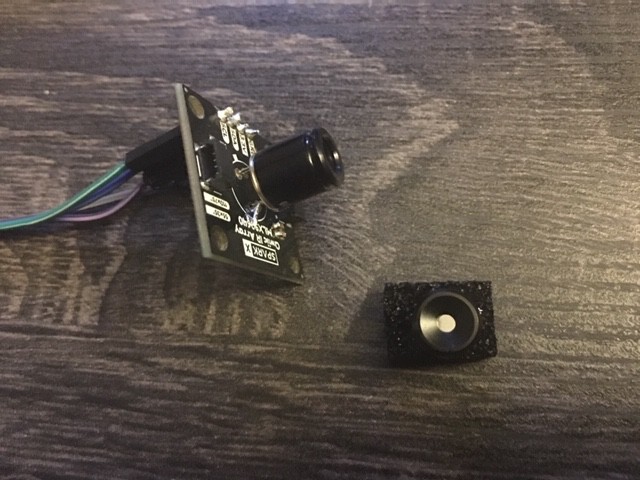i had damaged a sensor 110 deg x 75 deg, which is about 80$ and shipping. i did this when experimenting with the highest frequencies. chip spec is 1mhz. i ran above this testing it. for reading ram it seemed ok. it corrupted data somewhere from 1mhz and 4mhz data corruption happened within the rom. rebooting the device it didn't seem to work anymore. i decided it was better to get a narrower angle lens so i could see more detail.
same stuff applies as before with needing a rom dump.
also i decided to solder the new one on the old ones board. it saves about 30-40$ as digikey sells the sensor (by itself) for about 45$, and shipping can be free if your willing to wait 5-7 days inside of usa.
I could have put it closer to the board, but there are issues with solder wicking up towards the back of the device and shorting out the wires to the metal can which is grounded.
also i had been doing a lot of troubleshooting the old sensor and soldered it and removed it several times, and damaged the island pad beneath vcc so i needed room to run solder iron above and connect a wire thru the hole and to the top island, and the bottom and have a trace wire to 3.3vcc pin. it works ok so i'm not doing any more work with modifications of hardware.
it would be better to start off with a 55deg x35 deg sensor, and of course keep it at max speed 1mhz. also if not using sparkfun board be sure to use pull up resistors across sda and scl lines of around 2.2k and look at slew rate over o-scope because you will need to account for stray capacitance, and possible reluctance from the length of wire to board. it is recommended anyway that i2c wires try to remain under 6 inches

new sensor soldered in place, old sensor put to the side for possible salvage later (currently it does not address. learned a expensive lesson. don't push over 1mhz, and make sure wires are short. data corruption during write cycle can be deadly. device verifies a write, but only to the address sent, if the address is different, it rewrites possibly to the correct address this time. any incorrect writes to rom will be processed at start up of device in its registers. in my cause the corrupt writes went to the address of the chip and to the special registers. i have back up of the rom data, but do not yet know how to have device in special mode to restore its data.
Discussions
Become a Hackaday.io Member
Create an account to leave a comment. Already have an account? Log In.